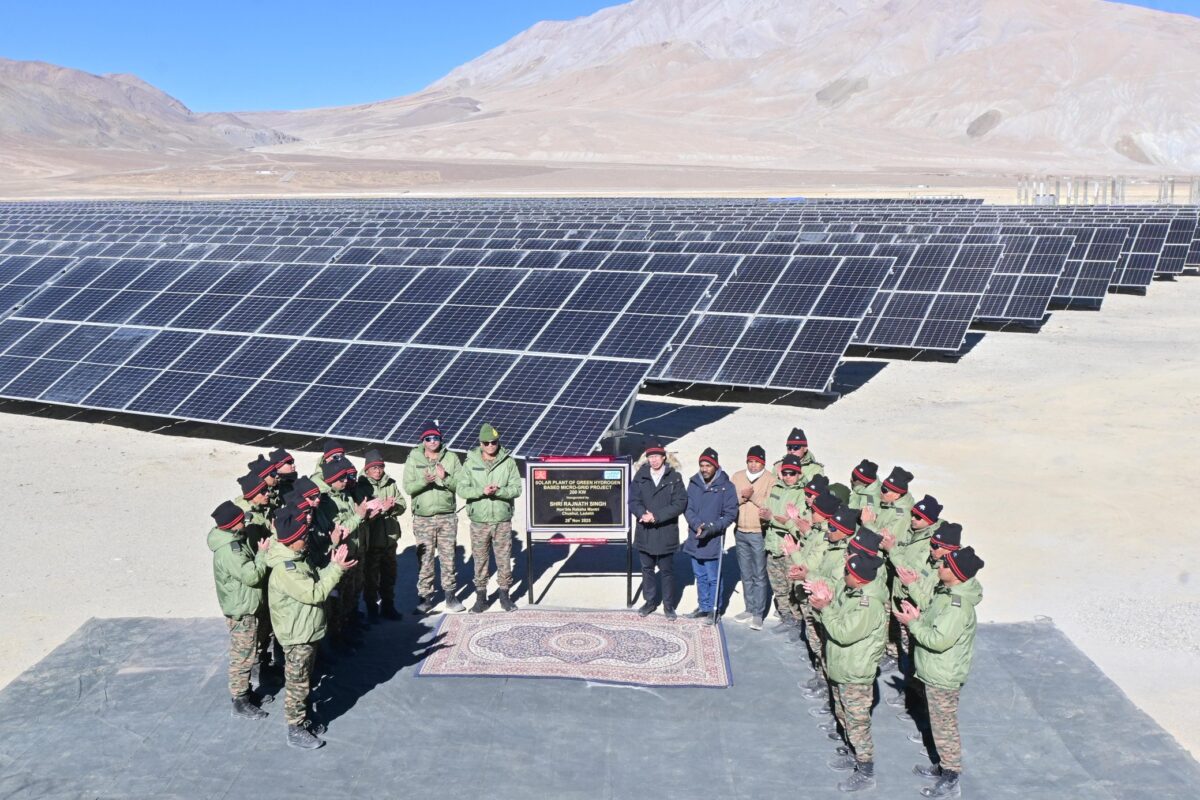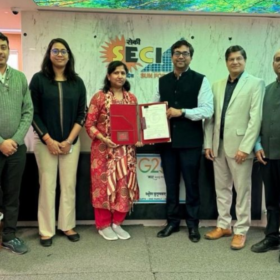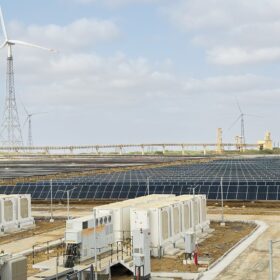India’s energy story is undergoing a constantly evolving transformation. From being a country heavily reliant on fossil fuels to aggressively pursuing renewable alternatives, India’s trajectory is both visionary and challenging. However, for all the optimism surrounding renewable energy from massive solar parks, wind farms, and net-zero targets, one critical truth that often goes unnoticed in the undercurrent is that no sustainable transition is complete or secure without an indigenously developed energy storage and management system. How to store and distribute the energy to make it a more competitive alternative than fossil fuels still requires much advancement.
At present, India is the world’s third-largest energy consumer as per the International Energy Agency, with coal contributing to almost half of the installed electricity capacity according to the CEA and NPP. While generation capacity from renewables has grown steadily, and commendable strides have been made to reduce the cost of solar PV cells for example, our ability to store, intelligently manage and distribute that energy still remains a massive challenge. This gap isn’t just a technical bottleneck, but also a strategic vulnerability that requires much attention across the entire renewable energy value chain.
Why efficient energy storage is the vital link
A wise man once said the Sun doesn’t shine at night, and the wind doesn’t always blow. The core challenge with renewables lies in their intermittency. For renewable energy to completely replace fossil fuels, especially in grid applications and transport, we need to be able to store surplus power and deploy it on demand. Battery Energy Storage Systems (BESS) solve this problem but energy storage in isolation is not enough.
The actual intelligence lies in the Battery Management System (BMS), which manages the integration of hardware, firmware, and analytics that manage how batteries are charged, discharged, cooled, balanced, and monitored. In essence, BMS is what determines a battery’s performance, safety, lifespan, and interoperability with the grid.
According to CRISIL Ratings (2025), India’s storage-backed renewable energy capacity is expected to increase from near zero in FY25 to 25–30 GW by FY28. This accounts for over 20% of all expected renewable additions in that period. Yet, most of the underlying BMS technology, which manages the renewable energy architecture, is currently imported from countries like China.
Hidden risks to national security
The dependence on imported BMS technology, particularly from geopolitical rivals like China, raises an urgent national security question. Modern BMS platforms are not standalone devices but are cloud-connected, embedded with telemetry modules that gather, transmit, and even allow remote control and diagnostics of performance data. This offers significant benefits in predictive maintenance, analytics, AI & ML driven optimisation, and distributed grid balancing. However, it also means that if the underlying software or firmware is foreign-made, it could be exposed to remote manipulation or cyber intrusion.
In fact, as recently as 16th May 2025, the Economic Times published a story that there were reports that China had allegedly installed instant kill switches in solar panels sold to the West. It is not difficult to imagine a scenario where a foreign-made BMS used in EVs, solar inverters, or grid-scale storage is disabled or, worse, weaponised during a geopolitical faceoff.
Drawing parallels from the telecom and defence sectors, digital sovereignty is no longer optional. While the chances of such a black swan event are low, if we extrapolate and draw parallels, under no circumstances would we allow a rival state to control our missile defence systems, then why would we allow them access to the control layer of our energy grid? This isn’t a merely hypothetical thought experiment but an ongoing and evolving reality.
India has already taken such steps and restricted certain Chinese telecom vendors from sensitive infrastructure, citing similar concerns. The logic should also extend to energy storage too which is considered critical infrastructure.
The economic case for developing indigenous BMS
There is also a strong economic rationale as well to developing an indigenous BMS. India’s BMS market was valued at USD 278 million in 2024 and is projected to reach USD 1.2 billion by 2033, growing at a CAGR of 17.9% as per the IMARC Group, 2025.
With the increasing adoption of rooftop solar, EVs, commercial & industrial (C&I) storage systems, and rural microgrids, demand for efficient, cost-effective BMS will accelerate across segments. India is already making strides in battery cell manufacturing, with Gigafactory projects led by Reliance, Amara Raja, and others already underway. However, BMS which is the “brain” of energy storage, still remains largely overlooked in policy frameworks, and this needs to change.
If we are to truly achieve Atmanirbharta in energy production and distribution, we must build out the entire value chain of cells, packs, electronics, software, and platforms.
Indigenous BMS development offers distinct advantages across multiple dimensions. For one, systems can be designed specifically for Indian conditions, optimising for high temperatures and variability in environments, grid instability, and deployment in rural settings. Local manufacturing also enables cost efficiency through reduced import duties, efficient supply chain, greater customisation, and streamlined after-sales support, ultimately lowering total lifecycle costs. Crucially, domestic development also ensures IP ownership, positioning India to become a global exporter of BMS technology rather than a perpetual importer. Finally, it catalyses high-value employment through R&D and advanced manufacturing, driving national capability in power electronics, embedded systems, and firmware innovation.
Enabling smarter, cleaner, safer grids
Modern BMS platforms now integrate machine learning and AI to optimise performance in real-time. They collect high-frequency data from every cell in a battery pack, analyse historical load profiles, predict degradation patterns, and adjust settings accordingly. These capabilities are crucial for grid balancing, time-of-day tariff optimisation, state of charge (SOC), and distributed energy management systems (EMS). Envision a smart BMS that has the ability to keep a solar battery fully charged ahead of an anticipated three-day monsoon, or automatically limits feed-in to the grid during low-demand hours. These aren’t just efficiencies but enablers of grid resilience and carbon reduction at scale, driving faster Net-Zero transitions.
India is globally perceived as a software powerhouse and is uniquely positioned to develop BMS platforms tailored for domestic and export markets. Indigenous development not only reduces cost and risk and unlocks innovation but also serves as a huge opportunity for untapped revenue potential via export.
How policy alignment plays a critical role
The need of the hour is a focused policy and industrial push to nurture indigenous BMS capabilities. Much like the government’s Production Linked Incentive (PLI) scheme for advanced cell chemistry (ACC) battery storage, a parallel incentive structure could be instrumental in accelerating domestic BMS design, development and adoption. This could include R&D grants and robust testing infrastructure to help Indian startups meet global performance and safety benchmarks.
Additionally, integration mandates in public EV tenders, commercial and industrial storage projects, and government-backed solar initiatives could ensure Indian BMS technologies are prioritised wherever feasible.
Finally, implementing mandatory cybersecurity certifications for BMS systems used to operate critical infrastructure would ensure operational control remains firmly within Indian control. By investing in this foundational layer of energy intelligence, India can position itself not just as a hub for battery production but as a leader employing global best practices in renewable energy transition.
To conclude, let us learn from trial and error and decisions made while developing the telecom, defence aviation, or semiconductor ecosystems. India’s energy future is not just about power generation but also about how to effectively control, store, and manage its usage. As we race toward our 2070 net-zero goal, indigenous renewable energy solutions should not just be a development goal but a national imperative.
The author, Satish Reddy, is Founder & CEO, Xbattery.
The views and opinions expressed in this article are the author’s own, and do not necessarily reflect those held by pv magazine.
This content is protected by copyright and may not be reused. If you want to cooperate with us and would like to reuse some of our content, please contact: editors@pv-magazine.com.








1 comment
By submitting this form you agree to pv magazine using your data for the purposes of publishing your comment.
Your personal data will only be disclosed or otherwise transmitted to third parties for the purposes of spam filtering or if this is necessary for technical maintenance of the website. Any other transfer to third parties will not take place unless this is justified on the basis of applicable data protection regulations or if pv magazine is legally obliged to do so.
You may revoke this consent at any time with effect for the future, in which case your personal data will be deleted immediately. Otherwise, your data will be deleted if pv magazine has processed your request or the purpose of data storage is fulfilled.
Further information on data privacy can be found in our Data Protection Policy.